The Keweenaw Peninsula (KEE-wi-naw) is the northernmost part of Michigan's Upper Peninsula. It projects into Lake Superior and was the site of the first copper boom in the United States. It's major industries today are logging, tourism, and jobs related to Michigan Technological University and Finlandia University.
The northern end of the peninsula is referred to as Copper Country. It is separated from the rest of the peninsula by the Keweenaw Waterway,a natural waterway which was part of Portage Lake. They dredged and expanded it in the 1860's across the peninsula between the cities of Houghton on the south side and Hancock on the north. Keweenaw means "place where one crosses" in the Ojibwa language. This Native American tribe is widespread in the northern states but is known mainly as the Chippewa tribe.
 |
This is an aerial view of the waterway to the left coming from Lake Superior into Portage Lake where it will eventually empty into the Keweenaw Bay on the right. The 22 mile shipping canal saved ships having to travel around the peninsula 100 miles in the dangerous Lake Superior. Another channel was also dredged between Portage and Torch Lake on the north to allow ships to reach the copper mines and the communities along Torch Lake. Today, Portage Lake serves as a harbor of refuge for ships seeking safety from Lake Superior's storms and is home to a U.S. Coast Guard station. Larger ships can no longer use the canals so they are used mostly for recreational boating.
|
 |
| The Bridge between Houghton and Hancock is the only access into the northern part of the Keweenaw Peninsula. It is a moveable lift bridge with the middle section capable of being lifted from its low point of four feet clearance over the water to a clearance of 100 feet to allow boats to pass underneath. The bridge is the world's heaviest and widest double-deck vertical lift bridge. |
 |
| What is so different about this bridge is during warmer weather the bridge looks like this as cars travel across. In the winter time, since the waterway is mostly frozen, they lower the bridge and the upper section is used for cars while the lower section is for those traveling across the bridge on snowmobiles. How cool is that! |
We stayed in the town of Houghton and our rig site was right on the waterway. We had beautiful views of the water and the bridge and both Houghton and Hancock. Since Houghton is the home of Michigan Technical University and Hancock the home of Finlandia University there were lots of college students around. And, of course, college towns have breweries and restaurants. So our hosts at the RV park told us about some good places to check out and since it was around lunch time..........
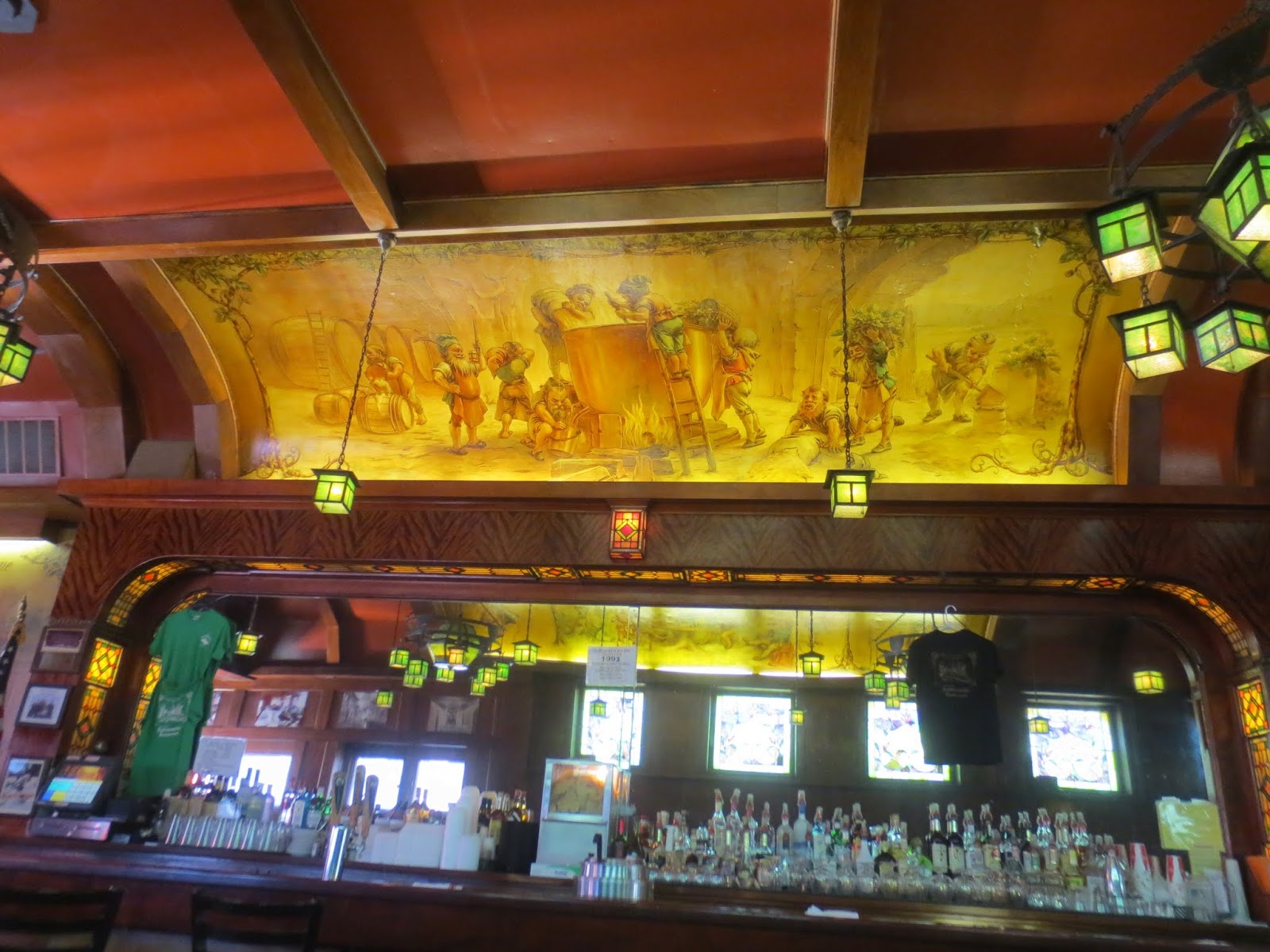 |
| We went to the Ambassador for pizza and beer. |
 |
| Of course, they had Michigan beers on tap |
 |
| and delicious thin crust pizza. Yum!!! |
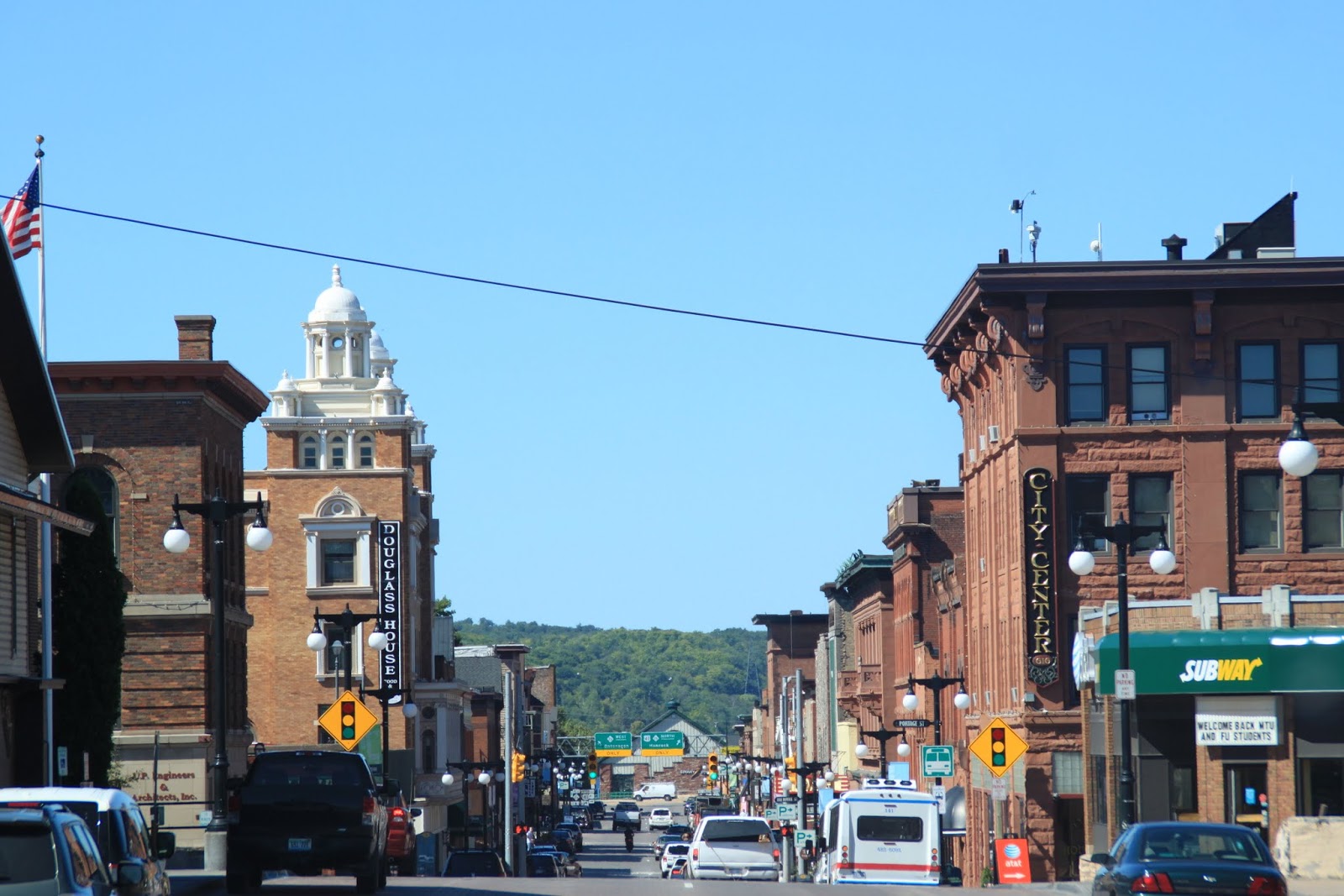 |
| Downtown Houghton on a beautiful, sunny day. School was back in session and students with backpacks or on bikes were everywhere. |
The next day was overcast but we decided to drive up to Copper Harbor on the very tip of the peninsula before the rains hit. There are several routes up to the area, the regular highway and the scenic route. Since the weather was iffy we decided to take the regular highway and, if the potential rain allowed, a scenic route back home.
 |
| The drive to Copper Harbor is very rural with the outlying forest close by. |
 |
| We went to the Visitor's Center for information which happened to be attached to the U.S. Post Office. Notice the window hours of the post office are only 3 hours a day. That will kind of give you an idea just how small this town is. |
Early in 1843 the U.S. War Department established a federal land agency in the area. Prospectors found small deposits of copper ore and native copper in the cliffs and on the ridges of the surrounding hills. A rush followed which reached its peak in 1848. Copper Harbor was a boom town with stores, hotels, and saloons.
 |
| There are nice hiking trails around Copper Harbor so we took the pups for a long walk. This is a view of Lake Superior with two huge ships slowly moving west. |
 |
| Across the bay is the booming metropolis of Copper Harbor. |
 |
| A tour boat in the harbor will take you to Isle Royale National Park which is an archipelago comprising more than 200 islands 45 miles north of Keweenaw County. The main island is the largest in Lake Superior, 45 miles long and 9 miles wide. It is still a wilderness paradise and the home of the largest herd of moose in the United States. |
 |
| The lighthouse in Copper Harbor can only be accessed by boat. |
 |
| About this time the skies opened up and the rain began. |
Now I have to admit my main intention for going to Copper Harbor was not only to see the town but also check out the great copper jewelry. Not to be. There are a few shops in the town but not what we expected. It really is a sleepy little town with some local artists who deal in wood carvings, stone, and pottery. The little copper jewelry we found was not local. We did get to stop in at the local general store because we had forgotten to bring our jackets along and the weather had become quite a bit cooler. In the general store we found a couple of sweatshirts and some locals talking about their vegetable gardens and how soon winter was coming back! We headed back to Houghton and decided to take the scenic route home.
 |
| We drove up Brockway Mountain Drive and took these photos of Copper Harbor in the distance. |
 |
| As you can see, Copper Harbor is not a big town. |
 |
| When we got to the top of Brockway Mountain visibility was minimal. Heavy clouds were rolling across the mountaintop and it was extremely windy. |
 |
| The Captain got out of the car so I could get this picture of him 'blowing in the wind'. We were 1,328 feet above sea level. |
Heading back to Houghton we figured the day was pretty much shot but when we got down the other side of the mountain we had quite a surprise.
 |
| On this side of the peninsula Lake Superior was very calm and sunny. |
 |
| We took a stroll along the beach and saw all these stones that are naturally washed ashore by the lake. There are areas where the stone is several feet deep and the stones are smooth and shiny from the lake action. |
 |
| As we drove through the small town of Eagle Harbor we came across this bakery. It was started by two monks from the Society of St John back in the 80's as they were in the midst of constructing a monastery along the shores of Lake Superior. |
 |
| Loved this sign near the entrance! |
 |
| The bakery goods looked delicious and look at the size of those muffins. We bought a few items and continued on our way. |
 |
| Back in Houghton the day was beautiful. |
 |
| We sat outside our rig and took in the great weather and the view. |
 |
| One of the few pictures with us in short sleeves and the Captain in shorts. |
 |
| Is it dinner yet? |
 |
| Another small town we visited on the peninsula was Calumet. |
 |
| In its day, with the copper industry booming, it was a very progressive town. |
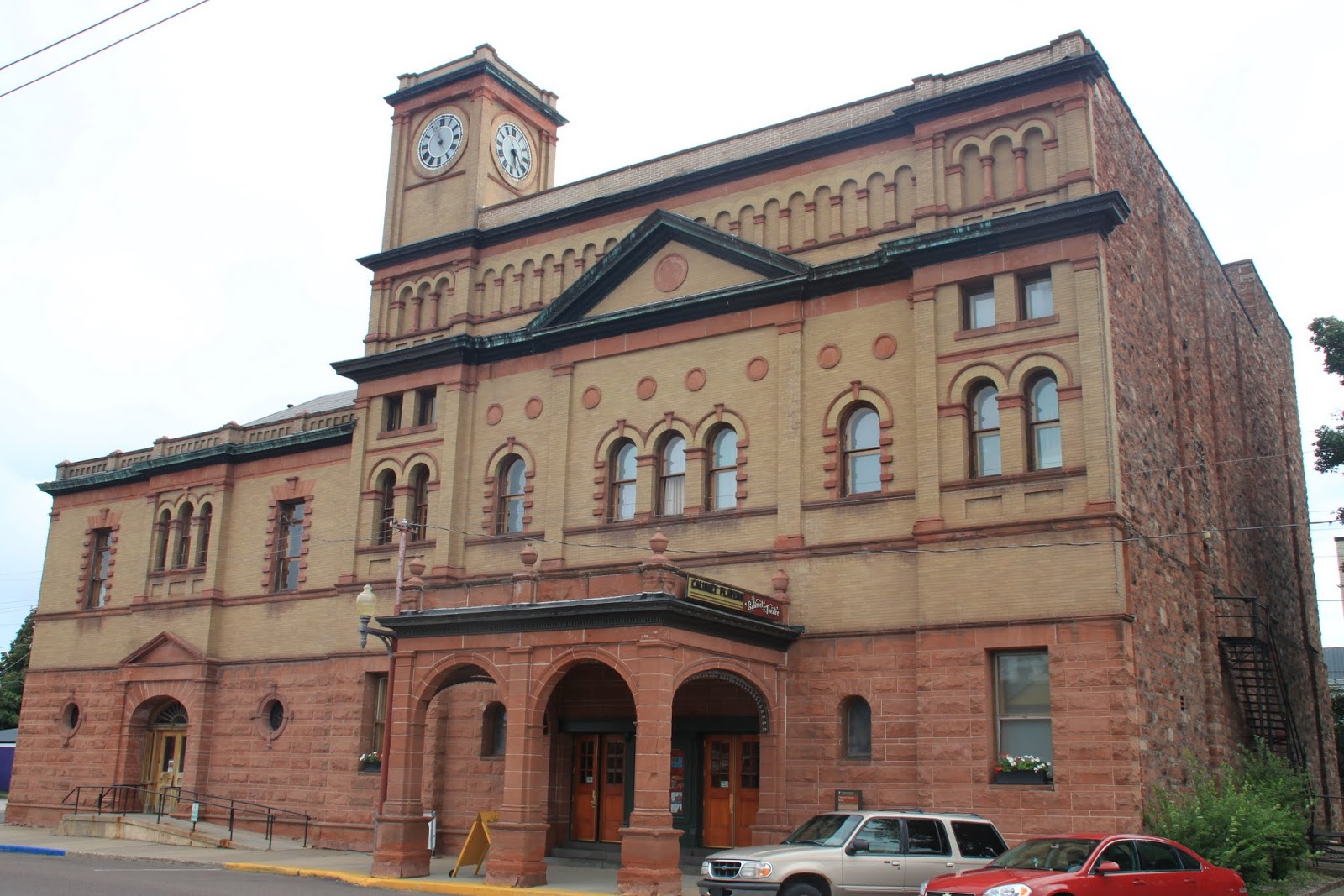 |
| The Calumet Opera House was built and opened in 1900. The theatre soon attracted some of America's finest actors such as Douglas Fairbanks, Sr., Lon Chaney, John Philip Sousa, and Sarah Bernhardt. |
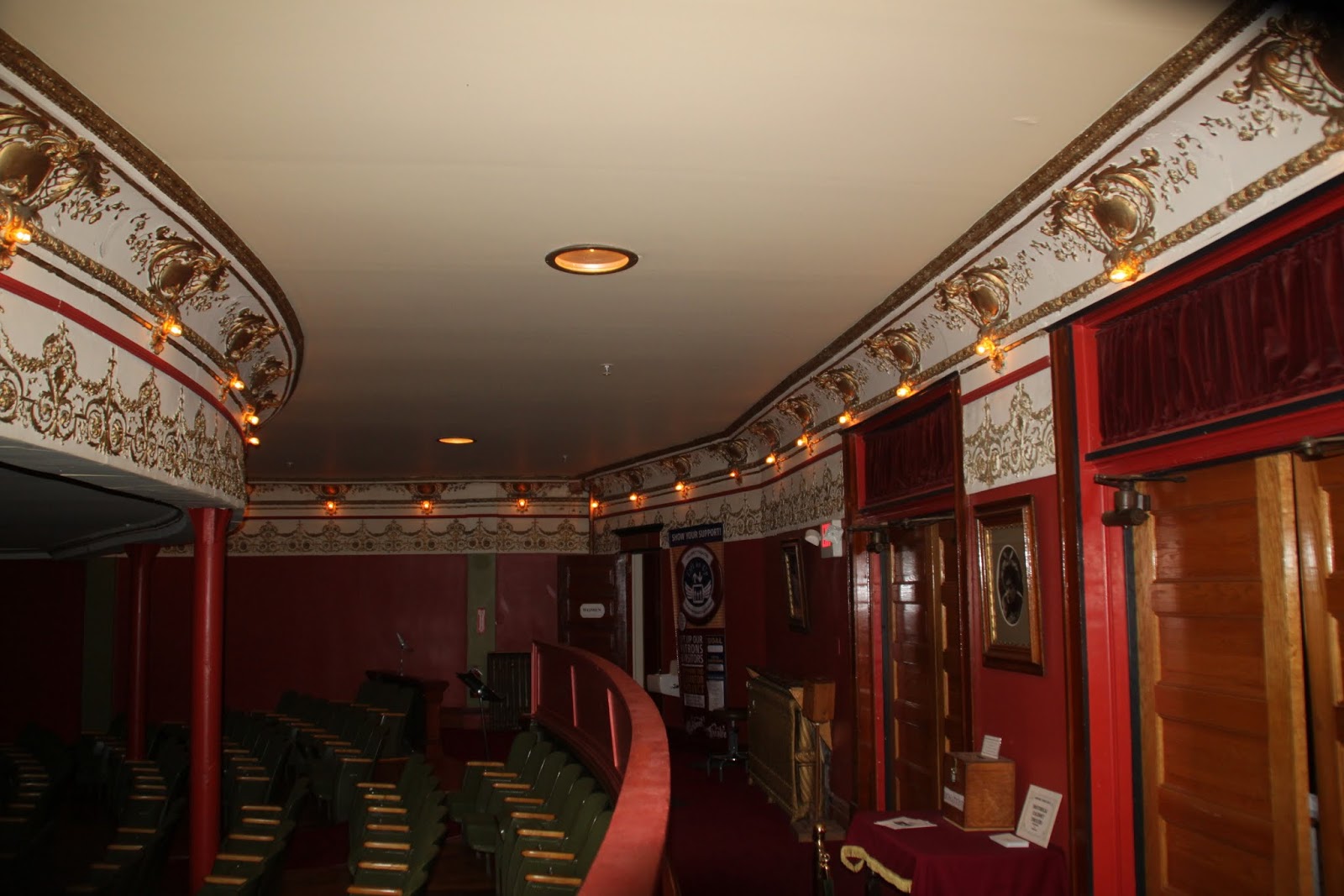 |
| The theatre was open to all the people of Calumet and surrounding towns. |
 |
| Center stage. The Calumet Theatre is acoustically perfect. If you were standing on stage, speaking in a normal voice, you could be heard even in the second balcony without amplification. |
 |
| The original hardwood floors are still present. |
 |
| On the left and right sides of the stage were the box seats. |
In 1913, the workers in the copper mines went out on strike to achieve shorter work days, higher wages, and union recognition. Miners typically worked 10-12 hour shifts with only one day off per week. Many young children were also hired by the mines to add to a family's income. As more copper mines were opened in the western U.S., and those mines became unionized, the miners in the west made noticeably higher wages. The strike dragged on for months and on Christmas Eve, 1913, the local women's auxiliary decided to organize a Christmas party for the strikers and their children. The party in the upstairs ballroom of the Italian Hall was attended by hundreds of people and children. At some point during the evening someone shouted "Fire" even though there wasn't one, and this started a panic and a stampede for the doors. The main exit was down a steep stairwell to the front doors of the building. In the panic, 73 people died with 60 of them being children. This event basically broke the back of the strikers. When the strike ended several months later, many of the workers had already left the area or gave in to the mine owners and went back to work.
 |
| The copper mill owners were fabulously wealthy. This home was built by Thomas Hoatson as a surprise for his wife and children. The house is 13,000 sq ft and has 45 rooms. It was completed in 1907 at the cost of $50,000. The mansion was used as a winter home for the family. |
 |
| The front entranceway. |
 |
| Entering the main 1st floor hall from the front porch. |
 |
| The main sitting room and library. |
 |
| The home has had many owners in the last several decades and some of those owners were antique dealers who gutted the house. |
 |
| The current owners have turned it into a bed and breakfast and you can also tour the home. They have spent many years refurbishing the house to bring it back to its original appearance. |
 |
| The wallpaper in the dining room doesn't look like much but we took a photo of it because we thought you might enjoy learning that it is made out of elephant hide. This is original to the house. |
 |
The home had many stained glass windows that were removed and the current owners have had them redone. |
 |
| A landing between the first and second floors. |
 |
| Part of the 2nd floor hallway. |
 |
| This is called the cedar room. The long drawers were used for storing tablecloths so they wouldn't wrinkle. |
 |
| One of the themed bedrooms. |
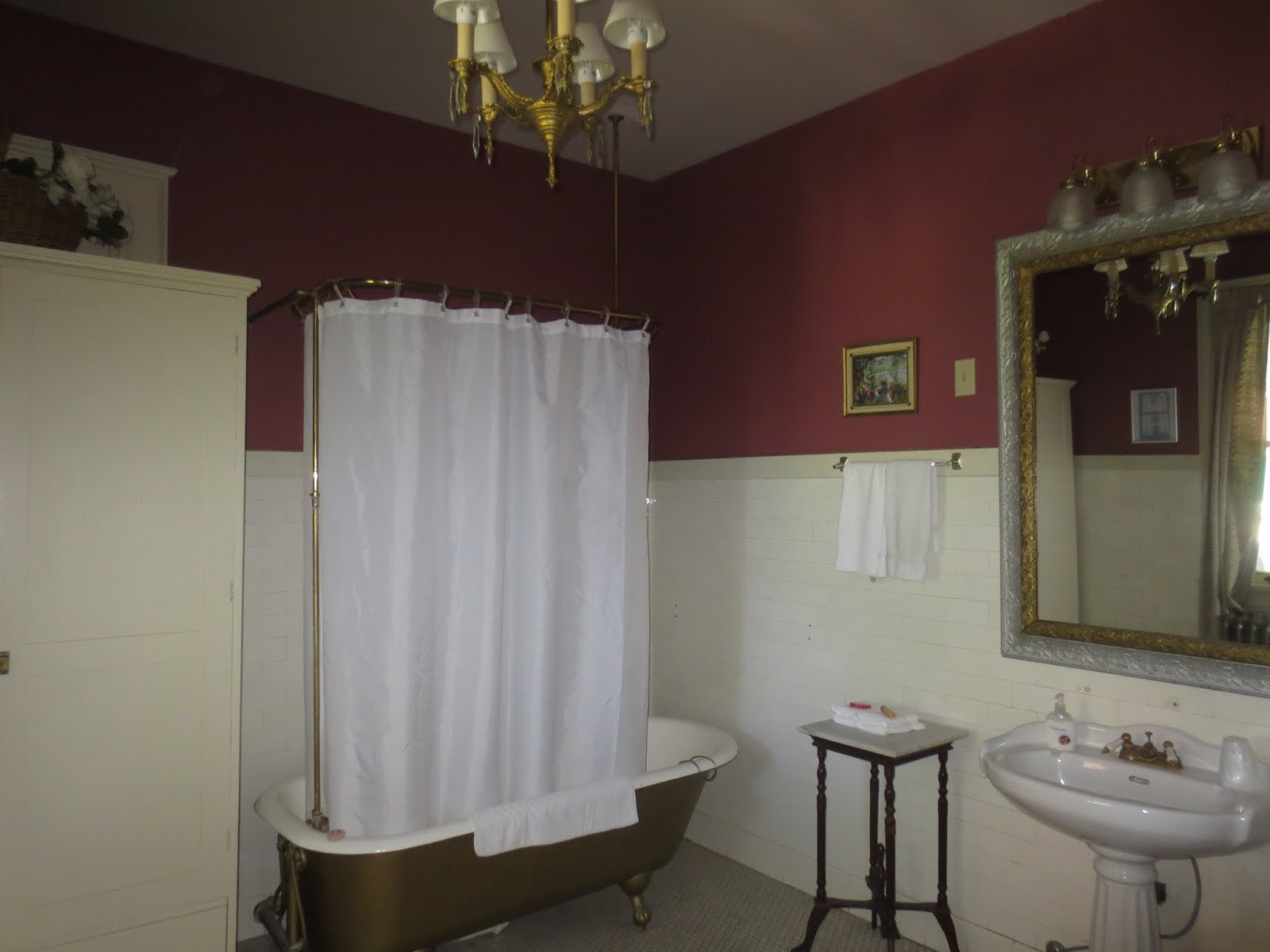 |
| With its en suite bathroom. |
 |
| The Captain pretending to be the owner of the manor house with his doting wife......yeah, right! |
 |
| This large rock is called float copper. It was found in 1970 buried under three feet of soil. Float copper was torn loose from fissures and lodes by glacial action and together with other rock material, carried great distances before being deposited as glacial debris. This piece of float copper weighs 9,392 pounds. |
 |
| Finally, along with thousands of other tourists, we took the drive out to the small town of Gay, Michigan, to see the Gay Bar. Other than the bar, there is very little left of the town. The bar was not worth the drive, either. |
 |
| The town is so small now they have even closed the local schoolhouse and made it into a park. |
 |
| This is an abandoned mining copper dredge by the side of the highway that is slowly tipping into the water. |
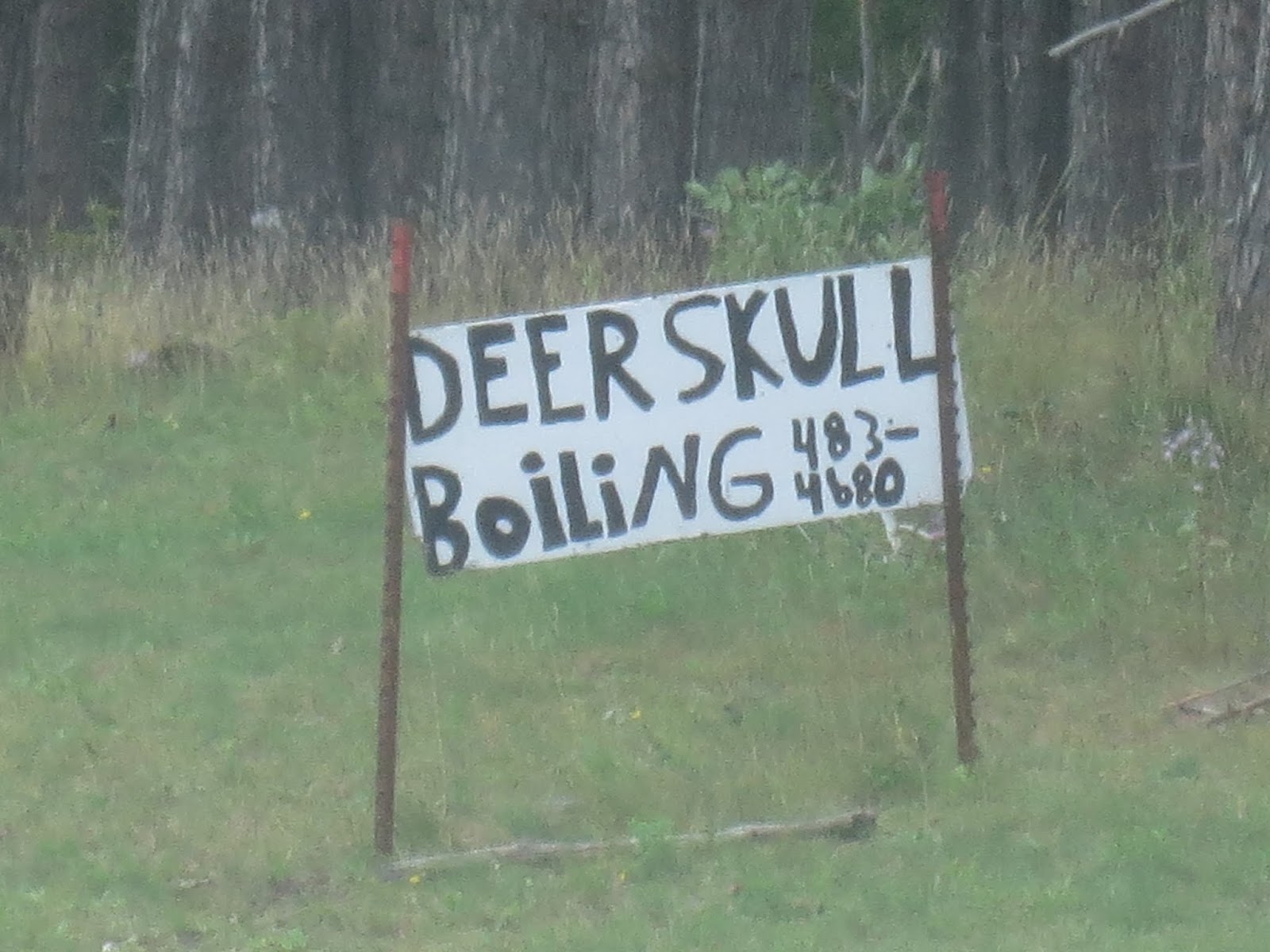 |
And, once again, we came across a sign I had to share. I have no idea what this means. I'm not even sure why anyone would want it done.
The Keweenaw Peninsula was a great place to visit. We saw many things and enjoyed most. Our next stop will be Ontonagon, also on the peninsula, to explore the Porcupine Mountains. Peace!
|

